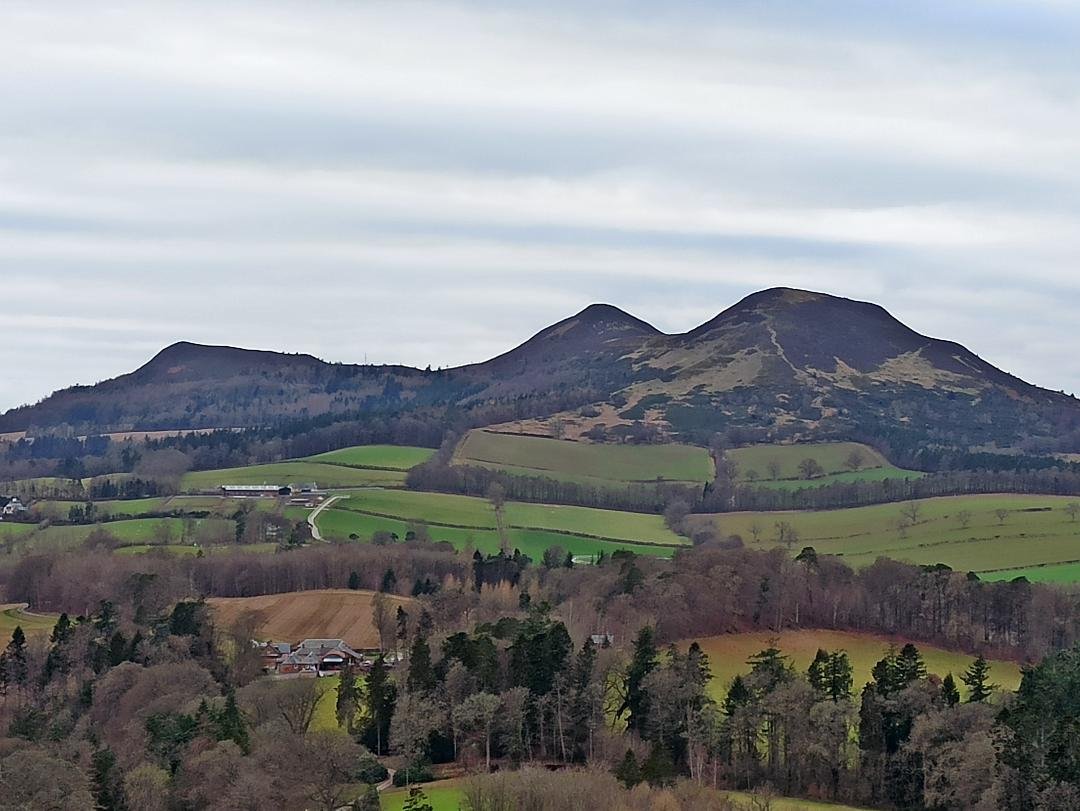They're not volcanoes
/By Fiona M Jones:
These hills don’t quite make sense. Three of them together, standing up from the lower land of the Scottish Borders, miles away from anything else on the landscape that might explain their origin. Other ranges of hills demonstrate the ancient folding of Earth’s crust or the gouging of high land in glacial ages past. These just stand there as though lost.
The Eildons, or Trimontium as the Romans called them. North of the small villages of Bowden and Eildon, south of Melrose. St Cuthbert’s Way threads between the three of them: a mediaeval pilgrimage route towards the Holy Island of Lindisfarne three days to the east from here. Any one of the Eildons makes a pleasant afternoon’s walk in good weather: shortish but steep, just high enough to look down from the top and view the land like a Google map below you.
Up out of the trees and bracken, it’s mostly heather and trodden footpaths of gullying mud or rocky scree. Bilberries in summer, wind-chill in winter, thick fog whenever the clouds hand low enough. England somewhere off to the south of you. The River Tweed, flowing north of here, used to be the national border—but centuries and battles have redrawn the map until from away up her you’re merely guessing where Scotland ends and England begins.
The Eildons are VOLCANOES, the local children say, evoking colourful pictures of lava and ash-cloud. They are not volcanoes, or at all events, they have not erupted. Guess again.
These hills are laccoliths: volcanic blisters pushed up by pressure from beneath Earth’s crust, then left there abandoned as rising magma receded and the softening under-crust hardened once more. Would-be volcanoes that ran out of steam. Would-be tectonic invaders that changed their minds and went away again without conquering this place.
Far back in history, early in the morning of the third long day of Earth’s genesis, that’s when it happened. The ground here creaked, cracked and crunched. It slowly rose to change the landscape and the destiny of its inhabitants. Streams altered course and the waves of the clouds broke against new summits. Plant cover adapted and the insects of the day found new niches. Swamplife would gather in the hesitations of a river unsure of its course. Aeons later, footpaths and roads and the boundary of nations would obey the lines they inherited from geology.
Even after all the millennia of erosion by ice and water, these three peaks are still sharp in outline. One or more of them must have come close to erupting, close to yet another version of history… but they never did. Convection currents in Earth’s mantle veered away. The magma stopped rising inside its sedimentary domes. The brittler sedimentary rocks eroded away, leaving a hard, fine-grained igneous surface: the lava that couldn’t quite break through on its first attempt, but wrote its place in history all the same.
***
Fiona M Jones writes short fiction, poetry and nature-themed CNF. Her published work is linked through @FiiJ20 on Facebook and Twitter.

















